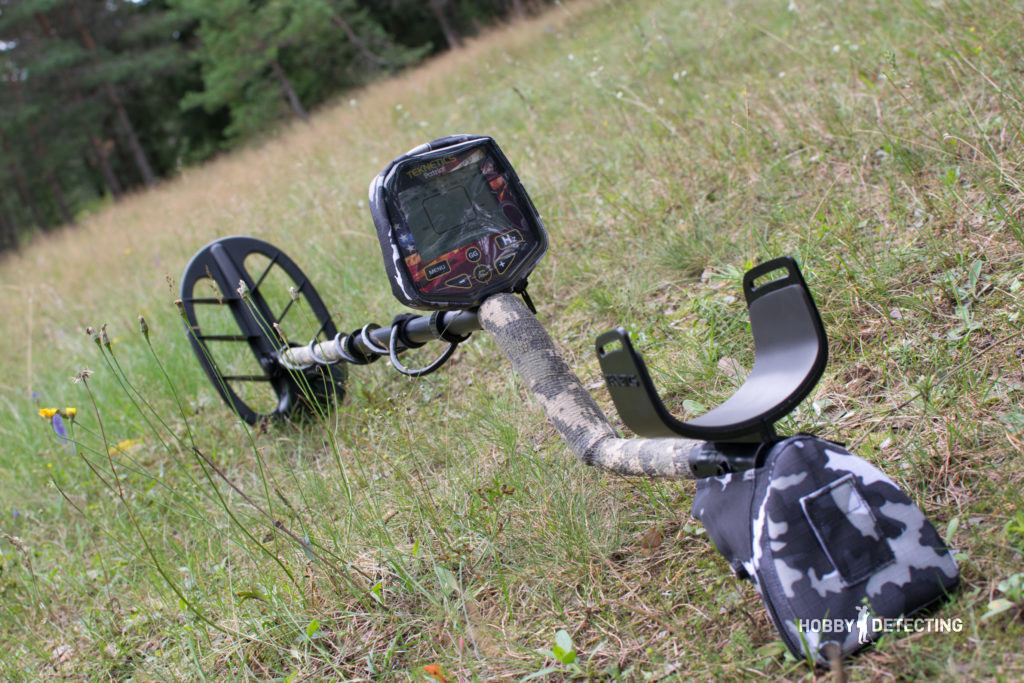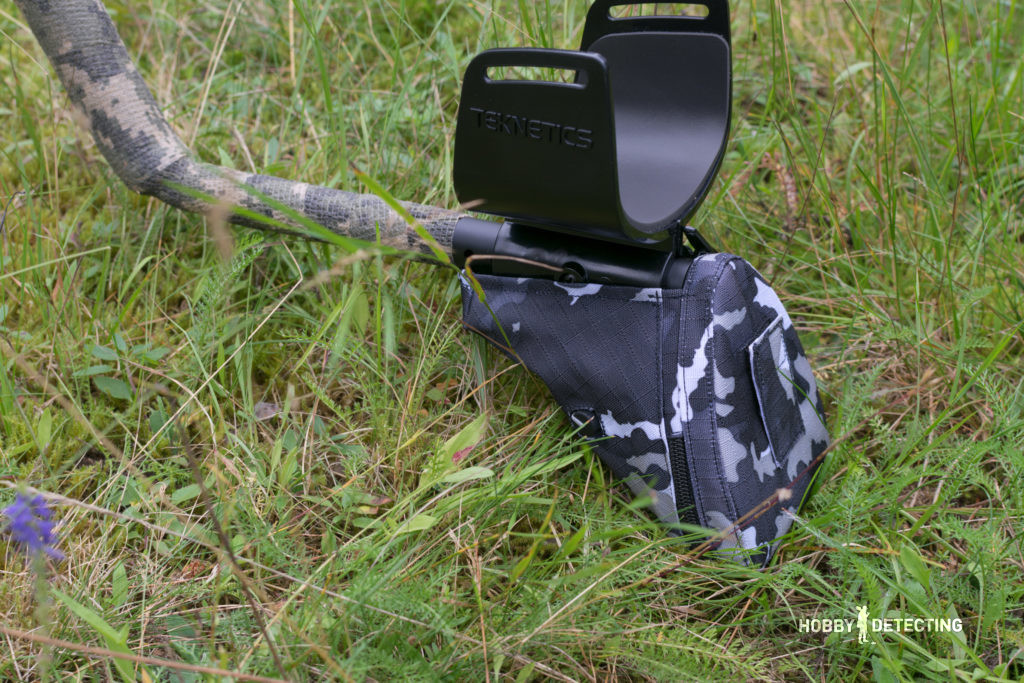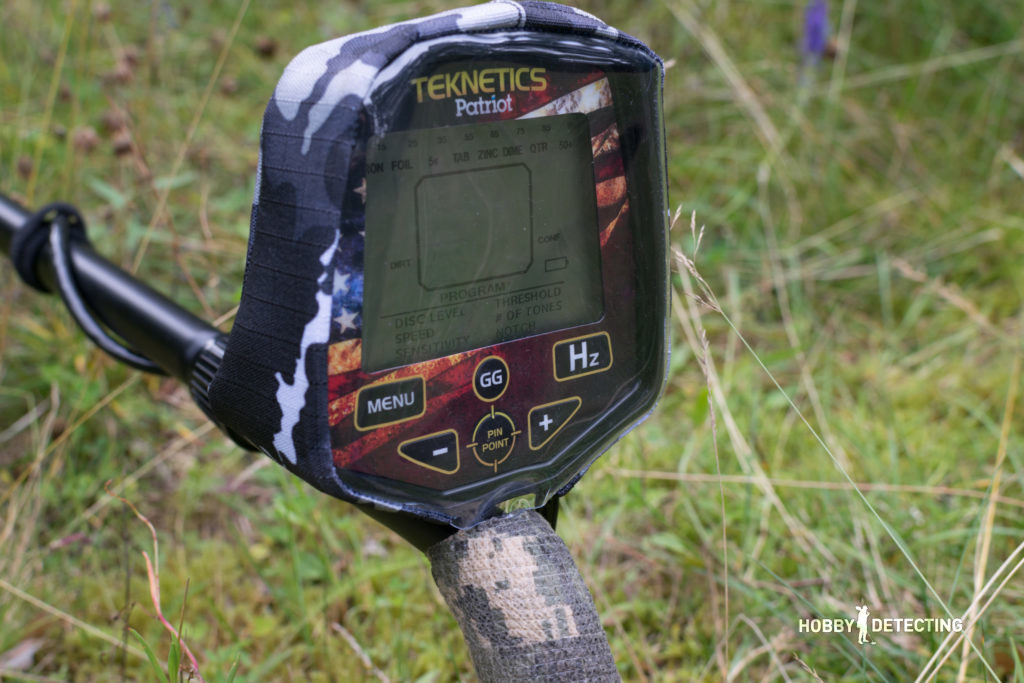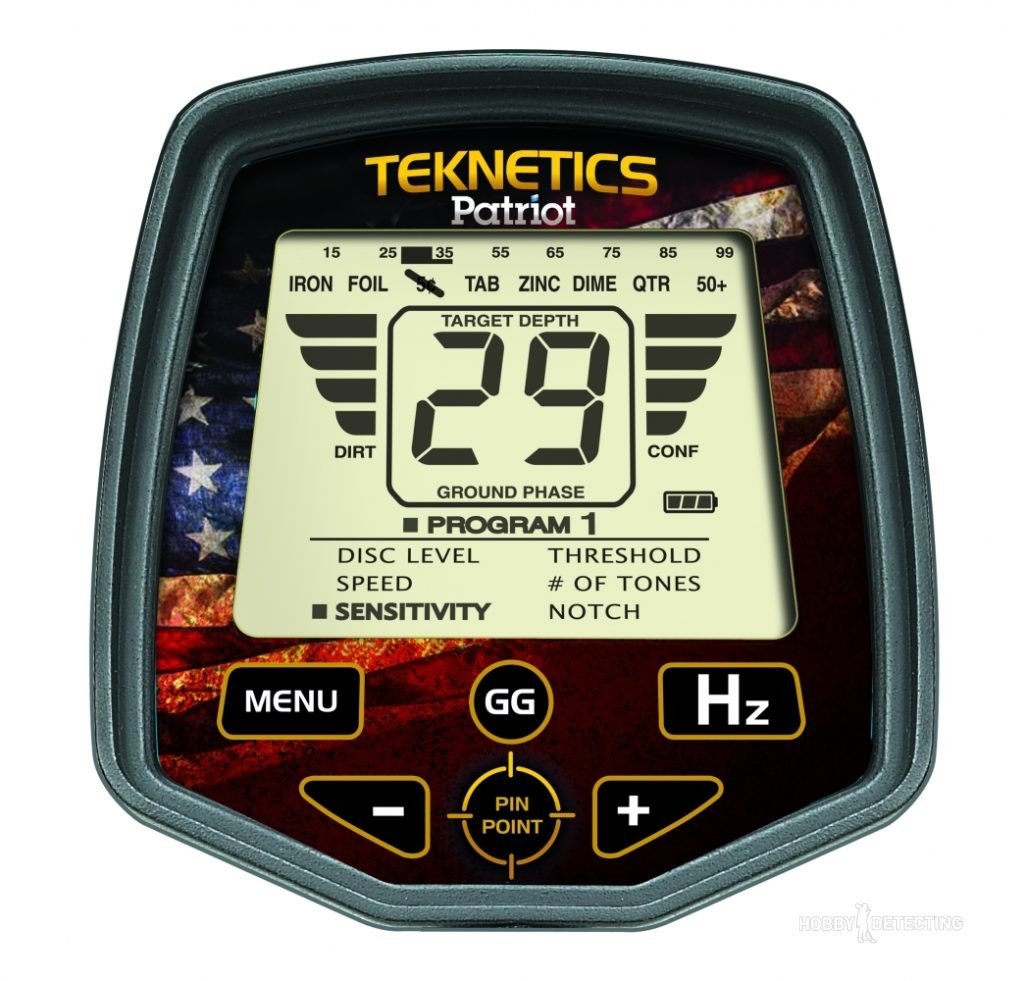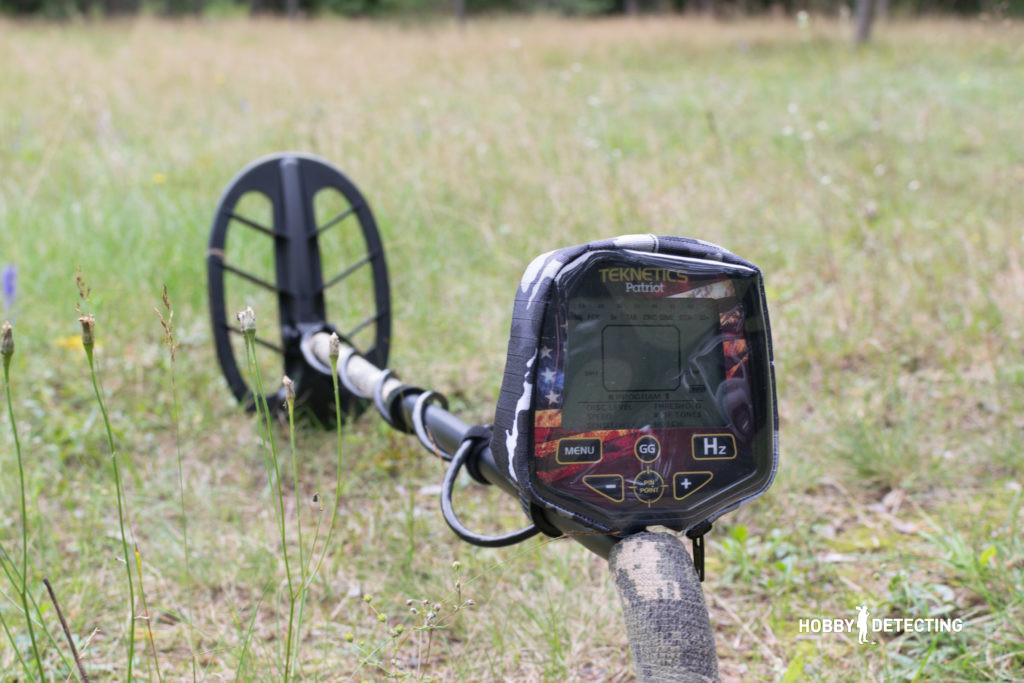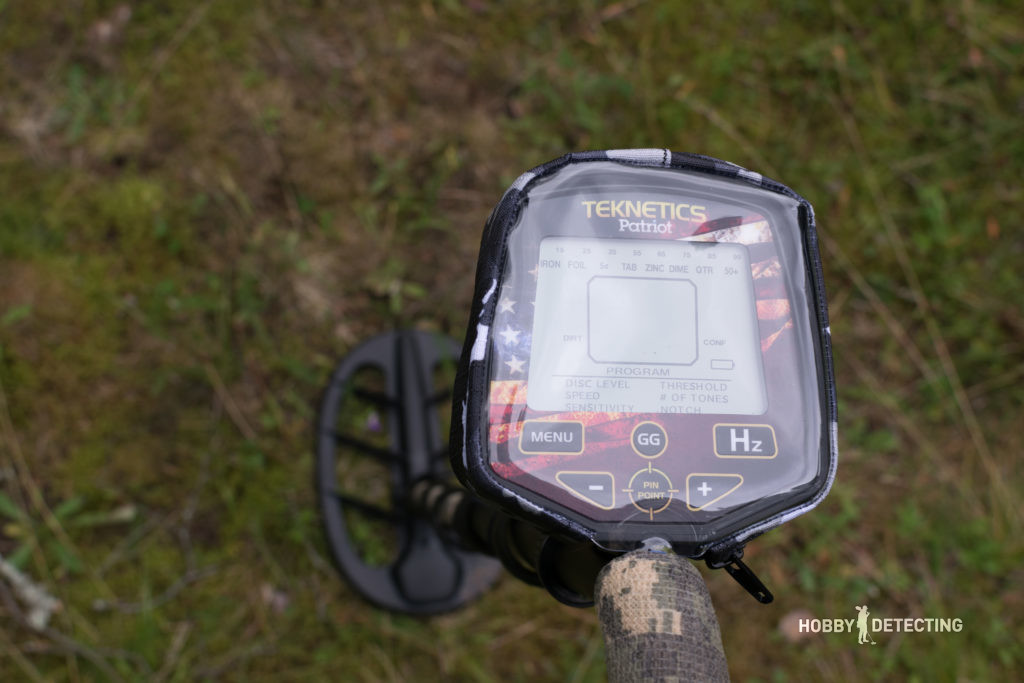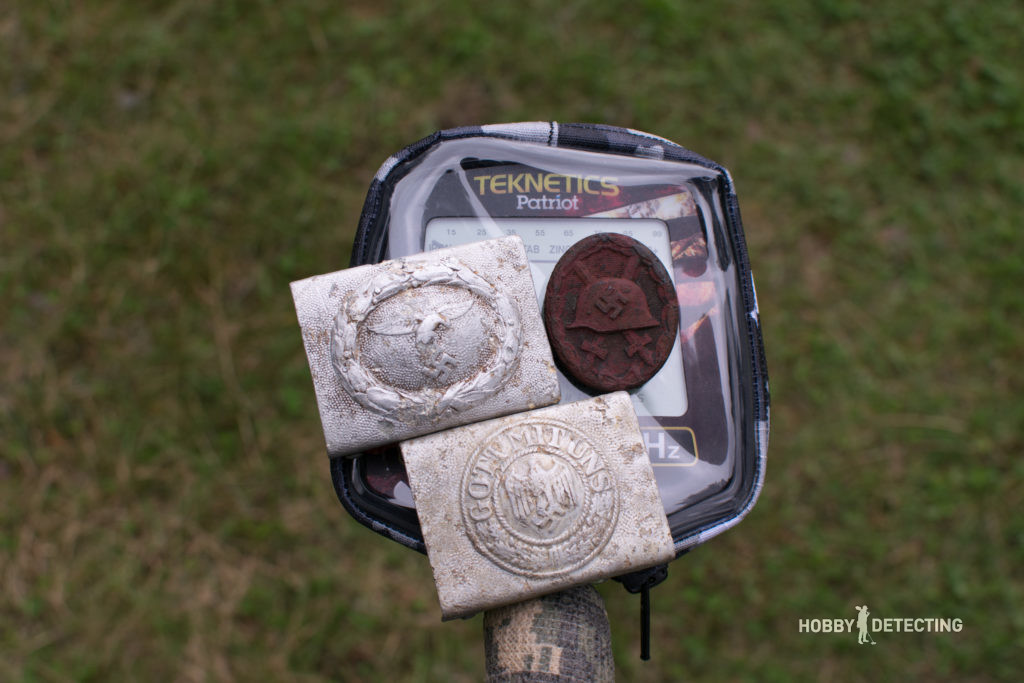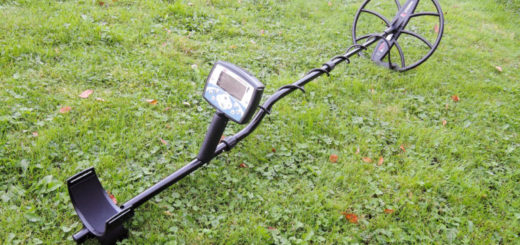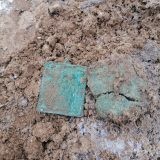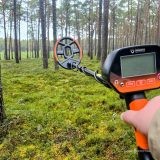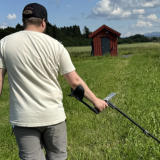Teknetics AmeriTek Patriot Detector – Our Review! (Settings, Tips, Photos+)
In early 2017, First Texas made a few additions to the line of metal detectors under the Teknetics brand. Having a series of EuroTek (a very decent series) the Texans decided to do something separate for the US and released a new series with the name AmeriTEK. About this series, we wrote earlier in our news: The news about the AmeriTEK series. The series came with three detectors- two initial ones and one semi-professional level. About the metal detector on the semi-professional level, called Teknetics Patriot, we will go in-depth on today in our review.
Promo code for Teknetics Patriot order!
Yep, you can use a promo-code to order Patriot from tekneticsdirect.com and get a $50 discount + FREE shipping!
PROMO CODE: A1479
This promo code applies to all orders placed on TekneticsDirect.com web-page!
The design
In fact, under the name Teknetics Patriot, there is already a familiar to many detectors, the Fisher F70. It has a very popular design: An S-shaped rod, with a coil at one end, the screen above the handle, and a battery compartment in the compartment under the armrest.
This is the most popular and one of the most effective solutions in the weighting of the device. The device with a regular coil is very well balanced, it is light and literally, you can walk all day without any fatigue.
Also, in the weight and good balance of the device, the location of the battery compartment under the armrest plays a significant role. There is a power button, which is also a volume control button. The device is powered by 4 AA batteries, which lasts very long – the manufacturer claims 40 hours of work. I checked this, and for the whole time of detecting, I only changed the batteries once, but managed to go detecting more than four times for sure!
The device operates at a frequency of 13 kHz, and this is a universal frequency for most types of detecting, with it you can effectively dig large coins at a greater depth (up to 25-30 cm), but at the same time have a good sensitivity to small objects at shallow depths (from 5 and up to 15 cm).
Control and functions of the detector
In addition to the power button and volume control, the device has a few more buttons on the front panel.
They are very understandable, but I recommend that you read the instructions for the first use. The Menu button switches the settings modes on the screen, the GG button is responsible for the manual ground balance, the Hz button can switch the frequency so that two metal detectors do not react to each other. The + and – buttons allow you to change settings, and the button under the sight: PIN POINT allows you to move the detector to a static mode (pinpoint) for easier finding the target.
The metal detector screen displays all the necessary information on functions and settings, as well as two additional indicators to improve the search efficiency:
This is DIRT and CONF. DIRT shows the degree of soil mineralization, and helps you to perform soil balancing with a changed type of soil! This is a very useful option, because it helps to keep the depth of detection and improves the search efficiency! And the CONF parameter shows the authenticity of the object identification in the ground, that is, if you have a stable VDI and the CONF indicator is high, you must certainly dig that signal! But, we must also remember another thing – weak deep signals will go with a low CONF, and they need to be dug, especially if you dig at a place where your colleagues have already found very much interesting!
The Settings
Don’t you know how to set up your new metal detector? It’s very simple because the Patriot is a simple metal detector.
PROGRAM and DISC LEVEL
It has only two search programs:
- Discrimination
- Autotune
There is a third – pinpoint, but it is turned on separately. It is a button for more precise localization of the object (in simple words – where to dig to pick up the find from the ground!). The Discrimination mode is enabled by default in the device, it is a more stable and quiet mode that helps to explore new places, dig in fields where there is high grass and walk in the woods. In this mode, the device does not give false signals from impacts against grass or branches, leaves. In general, for most situations this is the most appropriate mode, but not always. This mode allows you to cut off unwanted signals, for example – from objects of black iron. The Autotune mode is more sensitive to small and deep objects mode, it will be preferable for “emptying” your promising place. In fact, this mode can be called “all metals”.
SPEED
Also in the Patriot, you can change the value of SPEED:
- dE (Default) is the default value
- SL (Slow) – slow mode. Slow speed helps to locate metal objects deeper.
Sensitivity
One of the most important settings in any metal detector – it allows you to increase the sensitivity of the metal detector to metal objects. The sensitivity in the Patriot is adjustable from 0 to 99, but do not forget that it’s best to work on the optimal sensitivity setting so that the detector will work more or less stable, then the result will be best.
THRESHOLD
Threshold tone is the setting that distinguishes semi- and professional devices from metal detectors of the initial level. In this case, we are dealing with a serious metal detector and the value of the threshold tone can be changed from -9 to +9. What does it give? The threshold tone allows you to set this value when you will not hear any weak signals (negative value in this case), or the device will respond to weak signals (positive value), but it will be constantly buzzing – this is a sound background. To begin with, I would recommend setting negative values to better understand the device, and then move on to a positive value and find exactly the balance that will give you the best results in finding coins and relics.
#OF TONES
This setting helps you select the tone of the signal. You can choose from:
- One tone
- Two Tones
- Three Tones
- Four Tones
- Pitch
Each key, except for the Pitch mode, has an additional variation (designated as F). In fact, this is a small shift of the key in the positive direction. Most of the time it is more convenient to work in the mode of three tones, for detecting in the park or on the beach, but you can play with tonalities, for example, one tone is suitable for detecting in an absolutely quiet place where there are few metal objects and you will dig everything. Two tones are more suitable for detecting in the fields, in this case, all the positive (non-ferrous metals) signals will have a different tone from the iron. Three tones divide the non-ferrous metals into two additional tones, and this is good for detecting in the field where there is more debris. And four tones are suitable for work in trashy areas. Pitch is suitable for deep detecting of finds, but some diggers go with this tonality all the time.
NOTCH
This mode allows you to disable certain search segments, for example, foil, or zinc and include the same segments back. This is useful if you are looking for a lost object and you know what it will be – you cut out all segments except what you are looking for, and you will find your lost item much faster!
Detecting with the Teknetics Patriot
In general, this device is quite interesting among the entire range of Teknetics detectors. It is cheaper than the T2, but inferior to T2 and T2 + in only some specifications.
I specially pre-packed the detector with the rain covers to protect them from dirt and moisture. It often rains in our area, so we need to protect our detectors. If you live in a warmer place on the planet or in the desert, then there is no point in buying a case in your case. In addition, I wrapped the metal detector in camouflage tape to add a slightly more interesting look to it, and more personality!
In general, this device is slightly behind the top metal detectors F75 and T2. But the search characteristics at that level allow you to find both large coins and small silver coins from the Middle Ages. The frequency of 13 kHz and the more sensitive Autotune modes allow this to be done.
The Patriot with already washed finds. Two buckles were found near a German camp, and the wounded badge of third-degree lay on the edge of a German position under the moss. The detector easily saw them, since the depth of the finds was not too big – about 15 cm.
A beautiful collection of finds! The coil, too, would not hurt to wrap around with tape, to keep the appearance at the proper level. ? I wish you all good finds!


